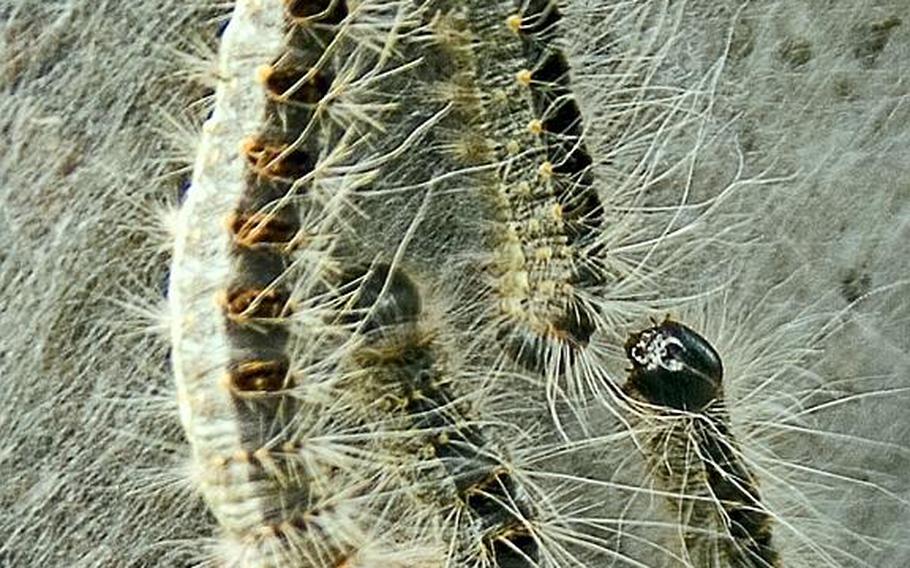
Military medical officials are warning people to avoid a caterpillar that emerges in Europe during the summer and whose bristles can trigger allergic reactions. The oak processionary caterpillar is indigenous to central and southern Europe and lives in oak trees from May through July, according to Europe Regional Medical Command officials. (Courtesy of Europe Regional Medical Command)
WIESBADEN, Germany — Military medical officials are warning people to avoid a caterpillar that emerges in Europe during the summer and whose bristles can trigger allergic reactions.
The oak processionary caterpillar is indigenous to central and southern Europe and lives in oak trees from May through July, according to Europe Regional Medical Command officials.
Hairs from the fuzzy caterpillar contain a toxin that can cause asthma and rashes, said Maj. Lesly Calix, chief of the Department of Medical and Veterinary Entomology at the U.S. Army Public Health Command Region.
Calix said symptoms can be triggered by touching the insects or their nests, or by inhaling the wind-blown hairs.
Itching typically begins two to 12 hours after exposure, and the rash may be widely spread over the entire body.
U.S. Army Europe spokesman Maj. Dan Meyers said he suspects he came in contact with a caterpillar and the toxins left him with a sore left eye on Friday. When he woke up on Saturday, Meyers said, his eye had swollen and it was crusted over.
“It felt like the sandman paid me a visit…literally you want to scratch your eye,” said Meyers, who visited the eye doctor soon after to get medicated drops.
The caterpillar hairs are so fine that people might not notice them on their clothing or body. But medical officials said there are ways to avoid exposure, such as not touching the caterpillars or their nests, avoid walking under oak trees through July, and wear a hat and clothing that covers your body. If you suspect you’ve had contact with that species of caterpillar, it’s best to wash your body and clothes immediately.
Anyone who sees a nest should call a local pest control shop to have it removed.
ERMC officials advise consulting a physician if you experience rash-like symptoms or itching, and over-the-counter remedies are not working.